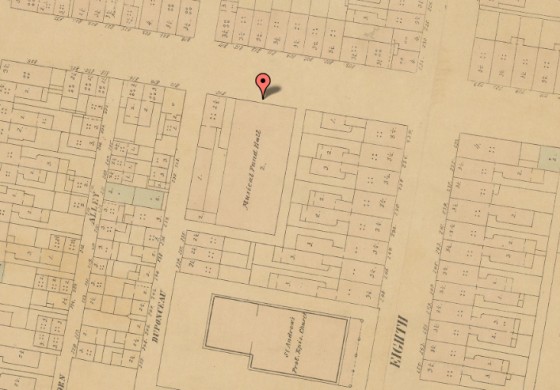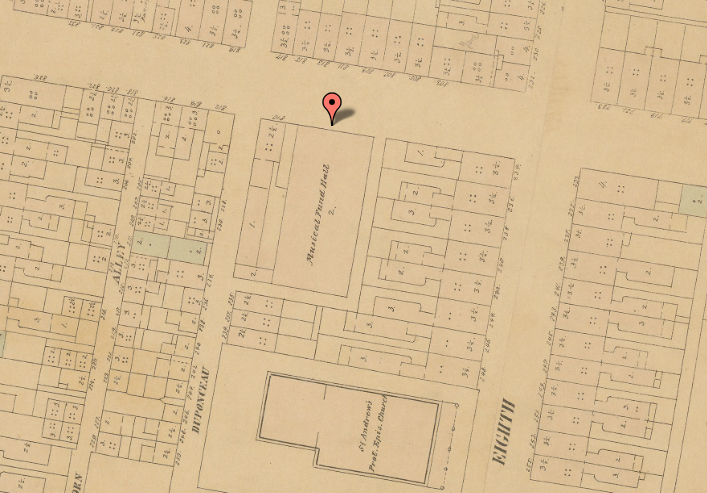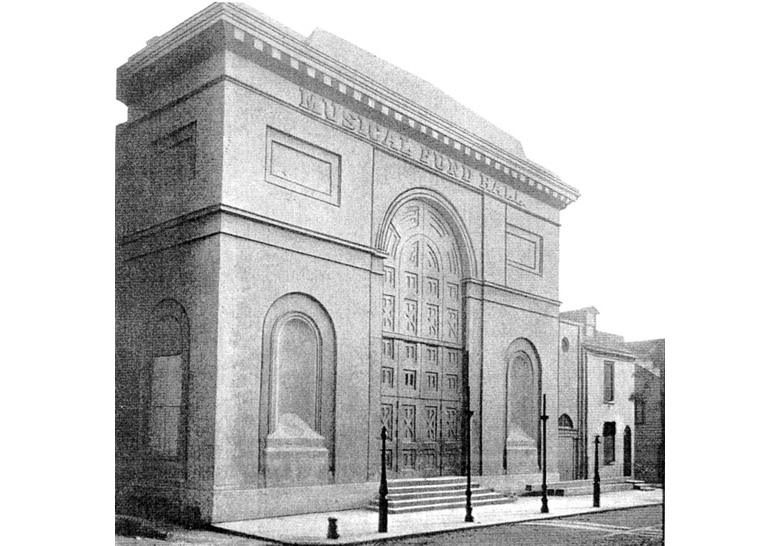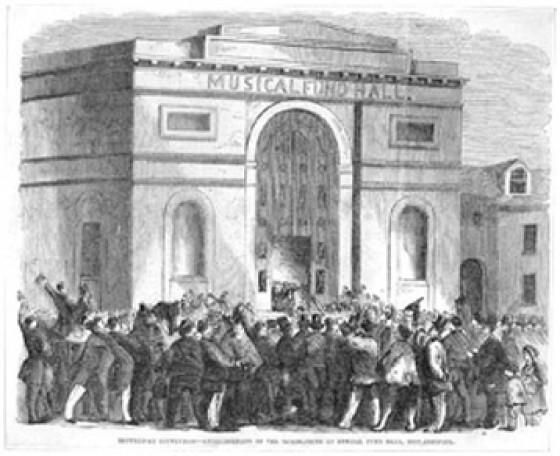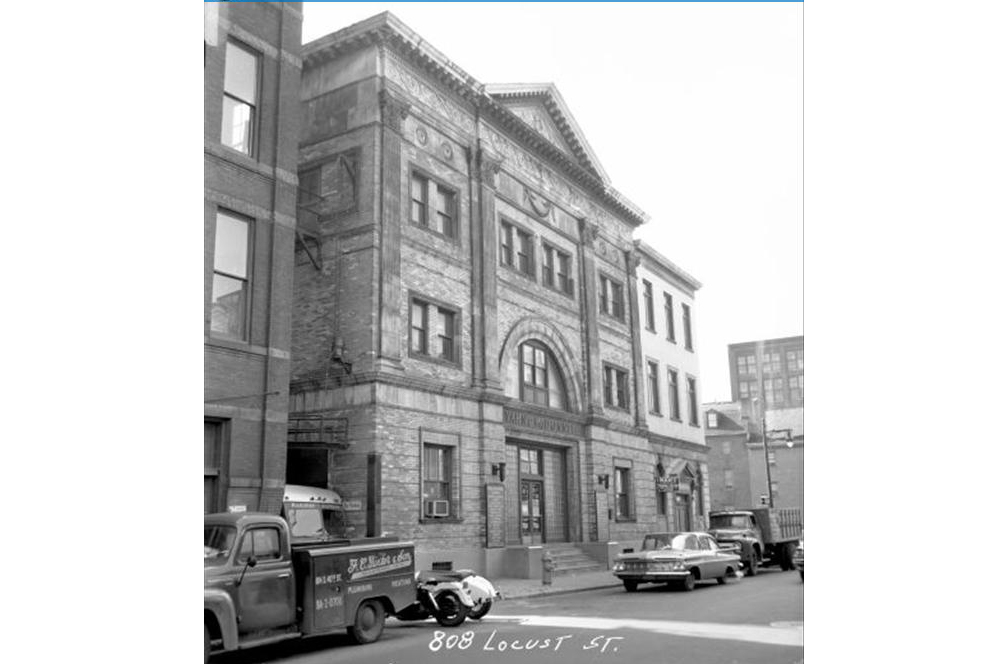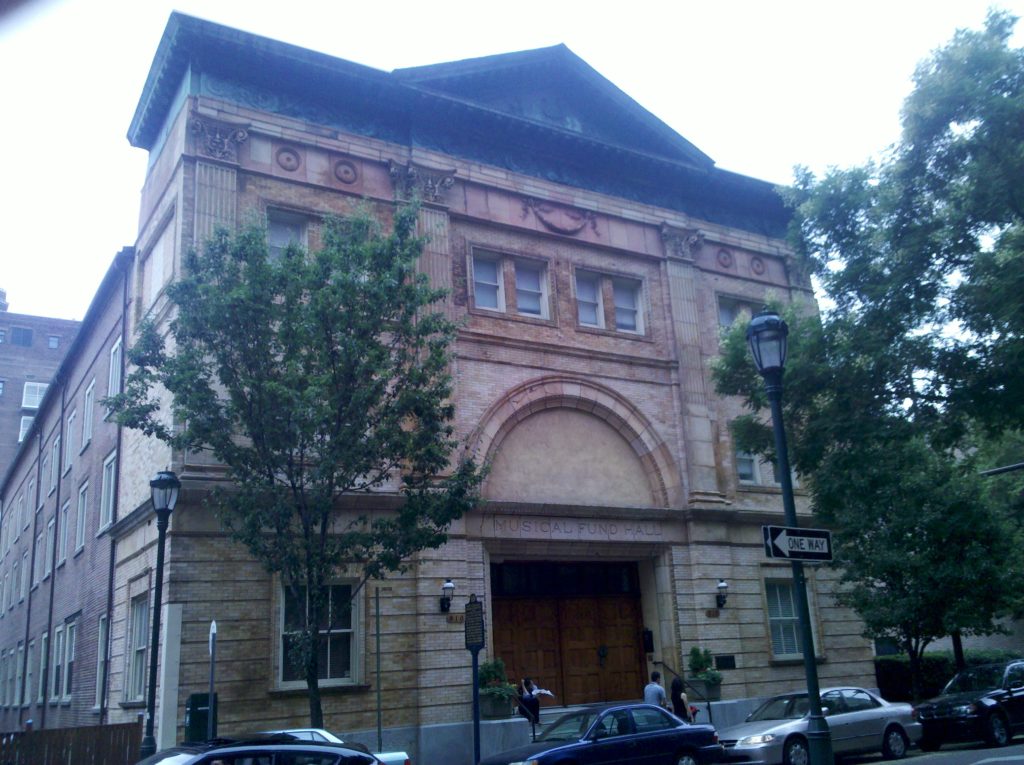Philadelphia has given birth to musical acts as diverse and celebrated as Will Smith, Jim Croce and Joey Lawrence. So it should come as no surprise that our city’s musical heritage is a rich one. According to the National Park Service, the building currently located at 808 Locust St. was at one time among the foremost and influential musical performance halls in the country. The Park Service reports that the Musical Fund Society formed in 1820 to help support indigent retired musicians. Among the first of such cultural-endowment groups, the Society purchased the Fifth Presbyterian Church on the south side of Locust Street in 1824. The image below, taken from Hexamer & Locher’s 1858-1860 Philadelphia Atlas, shows the location of the Musical Fund Hall only a few decades after it was established.
The Hall quickly became a preferred destination for singers, instrumentalists and lecturers of both American and European origins. Originally designed by prominent city architect and Society member William Strickland (also responsible for the Merchant’s Exchange and the Second Bank of the United States), the Hall would receive a facelift and expansion in 1847. The image here below, taken from the Park Service website, shows the building as it appeared immediately following what would be the first of several remodeling efforts.
During this phase of its existence, the Hall would achieve national prominence when it hosted the very first Republican National Convention in 1856. The landmark event—in which the emergent political party aggressively identified itself with the abolitionist movement—is commemorated in the woodcut engraving taken from the Historical Society of Philadelphia and pictured here.
While this was a launching pad for the Republican Party, 1856 also saw the Hall at its peak. That same year, the Academy of Music opened its doors on Broad Street, superceding the Hall and marking the end of its primacy as a destination for the world’s top performers. With the considerable funds that the Society had raised through its concert series, it was able to reinvent itself as an early venue for the organization of musician’s unions. However, by the time of its 1891 interior remodeling and the addition of another story in 1893, the venue was more frequently the site of social and sporting events than musical performances. This transformation was complete by 1937, at which point, according to the Park Service, the Society began renting the facilities out to a local boxing promoter. In 1946, the Society sold the building to the Yahn & McDonnell Cigar Company. The Hall is shown here below in a Department of Records photo from 1959, at which point the main auditorium had been converted into a giant walk-in humidor.
Yahn & McDonnell left in 1964, selling the building to the city’s Redevelopment Authority. In spite of this ownership change, as well as its 1971 designation to the National Register of Historic Places, the structure was left to decay. Following a roof collapse, the building was restored in 1980 and repurposed as the residential condominium shown here. Though the Hall is now long gone, the Musical Fund Society remains active and cites itself as one of the oldest continuing musical organizations in the United States.
–David Tomar

